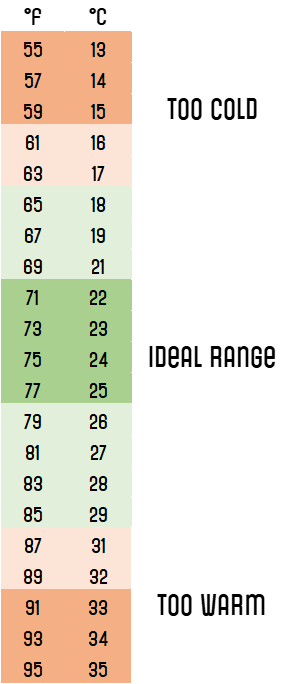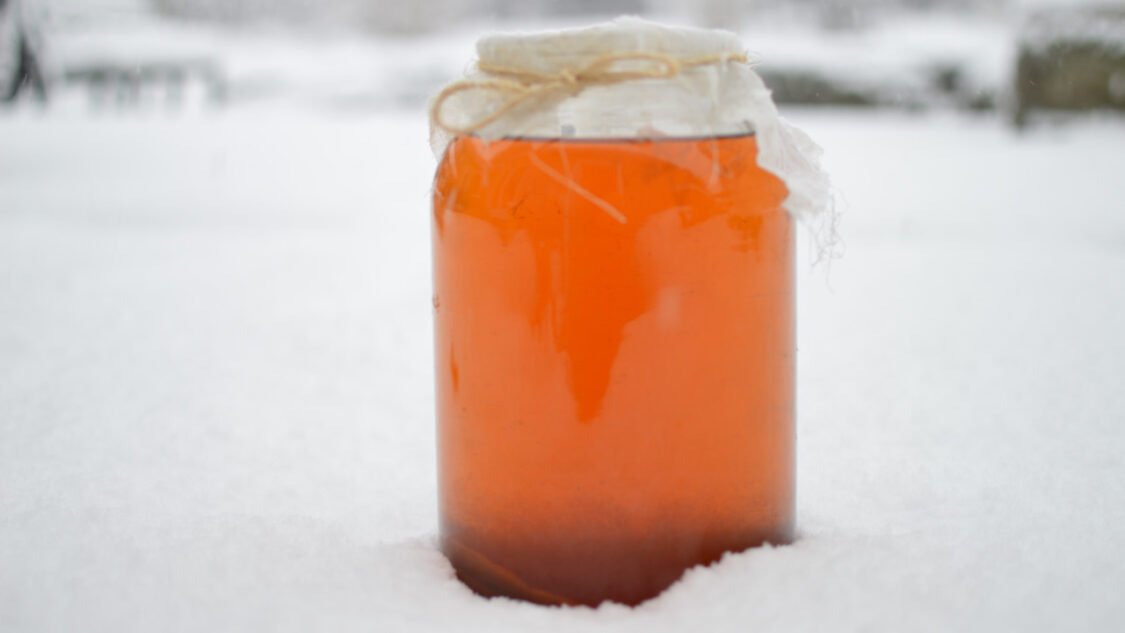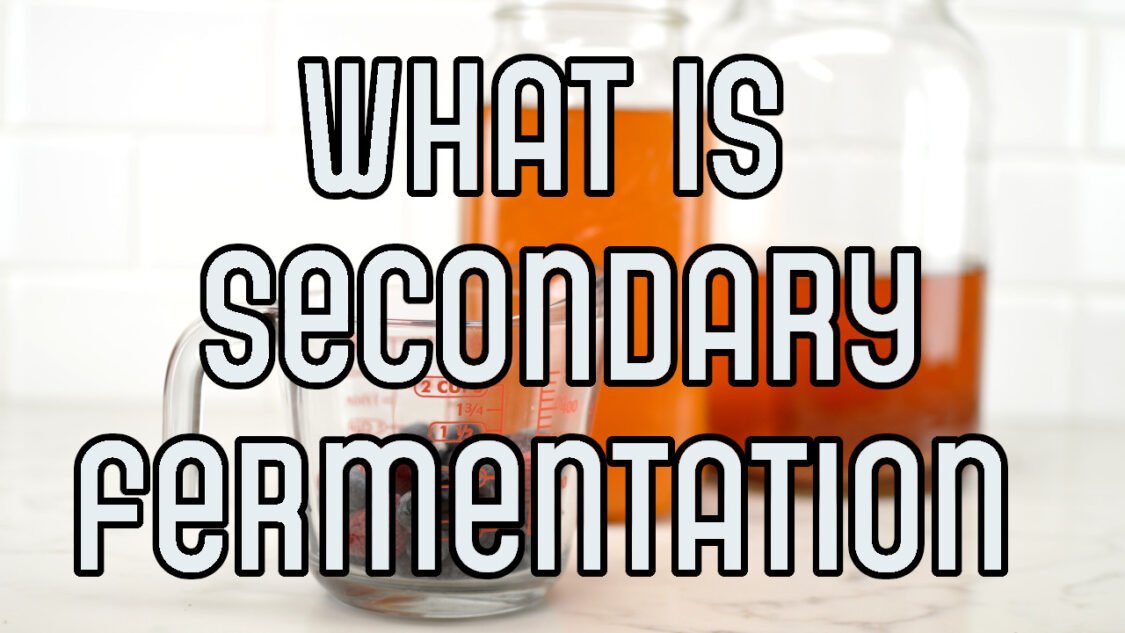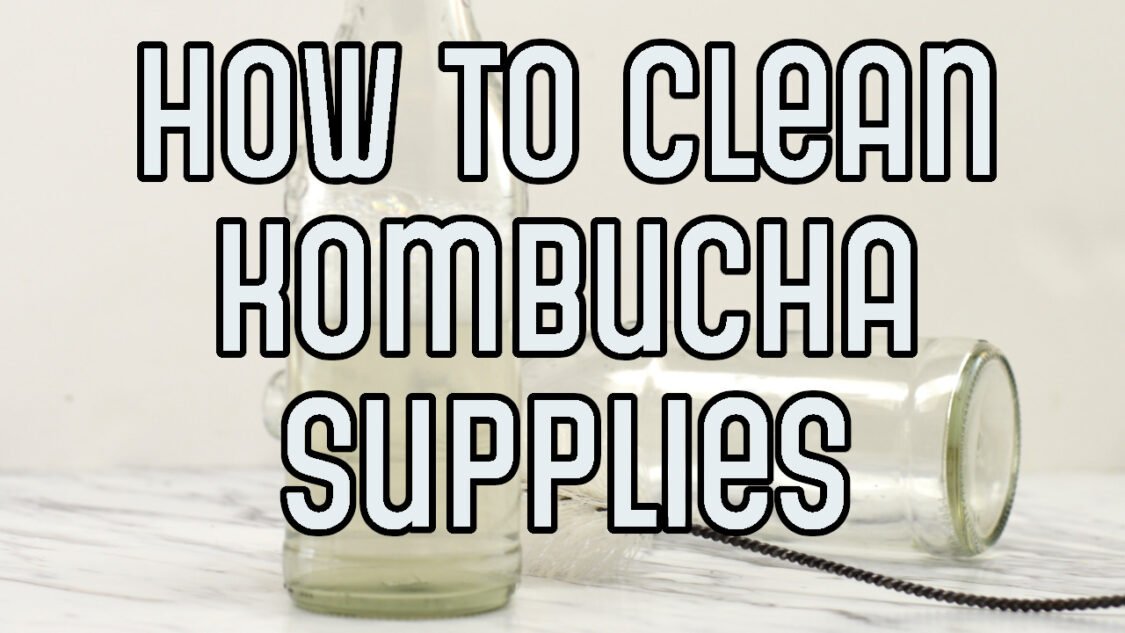Best Temperature for Kombucha
What is the best temperature for fermenting kombucha? What happens to it if it’s too cool or too warm?

If you are new to brewing kombucha or if you’ve successful made several batches, you know that temperature plays an important role in the fermentation of kombucha.
This article covers how the temperature of your kombucha fermentation affects the finished kombucha and the best temperature for kombucha fermentation.
HOW TEMPERATURE AFFECTS KOMBUCHA
Kombucha is fermented by millions of good bacteria and yeast in the starter liquid and attached to the SCOBY.
At the start of fermentation, yeast consume the sugar in the sweet tea, transforming it into carbon dioxide (carbonation) and ethanol (alcohol).
Next, bacteria feed on this ethanol, turning it into a variety of acidic compounds which give kombucha its distinctively sour and delicious taste. The yeast and bacteria work together and their activity overlaps, it’s not as though the bacteria waits for the yeast to finish then begins their activity.
These bacteria and yeasts have a range of temperature where, like us, they are most comfortable and they work best without overheating or going dormant.
Temperature has an effect on your fermentation process (timeline) and flavor of your finished kombucha in the following ways:
- Brew length – duration
- Kombucha flavor – acidity/sweetness
- Carbonation – fizzy/flat
- Protection against unwanted organisms – mold!
Generally, when the temperature is too low, they slow down their fermentation activity and perform the fermentation at a slower rate (while also increasing the likelihood of mold).
Just like how foods kept refrigerated will prevent spoilage (mold) longer while food left on the counter will quickly go bad and become moldy. Kombucha brewed at cooler temperatures has a weaker acidity / tang and will tend to be more sweet.
When the temperature is too high, these microorganisms begin to die and the overall population (colony) becomes weaker. Kombucha brewed at warmer temperatures will have a very strong vinegar character.
The fermentation temperature also impacts the time required for your fermentation to complete. Kombucha fermented at the higher end the temperature range will require less time to complete since the organisms are more active.
The opposite is true for fermentations done at the lower ranges, they will take longer since the organisms in the fermenting kombucha are less active.
Kombucha Fermentation Temperature Range
This graphic shows the range of temperatures for brewing kombucha:

From the chart you can see that the best temperature for kombucha is a range from 65F to 85F; however, the ideal range where you can expect consistent, delicious results, is from 71F to 77F.
75°f - Best Temperature For Kombucha
Kombucha can be brewed in a temperature range between 65-85°F (18-29°C). For the most delicious kombucha my experience has found the best temperature to brew kombucha is 75°F (24°C).
This temperature is optimal for the right mix of healthy yeast and bacterial activity. In my experience, fermenting at 75F produces perfect kombucha every time.
Fermenting Kombucha Warmer
As the fermentation temperature approaches 80°F and warmer, the resulting kombucha tends to have a more yeasty character compared to one fermented at a lower temperature. Some people claim it is produces a ‘thicker’, full-bodied kombucha that is more tart compared to sweet.
This is a result of the rapid multiplication of yeast at warmer temperatures which then quickly consume the sugars in the starter tea and produce by-products which are food for the bacteria. The bacteria feast on these compounds and the more they will produce the acids that give kombucha it’s unique character.
The time required for your kombucha to ferment will be reduced and the longer it is allowed to ferment the more acidic (sour) it will become. If you leave your fermentor for 7-10 days, which is a typical duration at room temperature, you will find it is more acidic that expected.

Fermenting Kombucha Cooler
Fermentation temperatures below 70°F results in less active yeast and the fermentation could completely stall which gives more time for unwanted organisms a chance to take hold.
Since the yeast is less active, production of ethanol occurs at a slower pace which means less food for the bacteria. recall that bacteria convert ethanol to a variety of acidic compounds, which lower the pH of the kombucha, making it further resistant to mold and unwanted contaminants.
Kombucha fermented between 70-75°F. results in light, crisp tasting kombucha that is nice and sweet, with a pleasant acidic finish.
HOW TO MAINTAIN AN IDEAL TEMPERATURE
A key consideration when starting to grow your own SCOBY or begin fermentation of your kombucha is the temperature of the location where you will be fermenting it.
If your fermenting location is warm, find a cool, dark place to ferment the kombucha. A dark cupboard or the basement work great. During warmer conditions you should plan on tasting your kombucha more regularly since it will ferment much more quickly and become very acidic if left too long.
If your house is cool, try to find a warm spot in your house such as above the refrigerator, hot water heater, or near a radiator/heat vent. If you have a difficult time keeping your kombucha in a safe temperature zone, consider purchasing a kombucha heat mat (affiliate link 
Although I’ve never tried it, some have also had success wrapping their fermentation jar with non LED-holiday lights to provide gentle warmth.
If you want to go really deep on this topic here is a scientific paper you may want to review: Impact of time and temperature on the physicochemical, microbiological, and nutraceutical properties of laver kombucha (Porphyra dentata) during fermentation
Tracking Kombucha Temperature
To monitor your kombucha fermentation temperatures, you can use something like these adhesive strip thermometers (affiliate link 
It’s a great practice to keep notes on your fermentation temperature and whether or not it fluctuates along with notes on the final taste of your kombucha. This way you can determine what temperature range produces the kombucha flavors that you like the best.
If your fermentation temperature changes during the course of fermentation, it could cause your SCOBY to sink. Don’t worry! This is totally normal and expected.
Helping you learn to brew kombucha, find inspiration for new kombucha flavors and use kombucha to make kombucha mocktails




